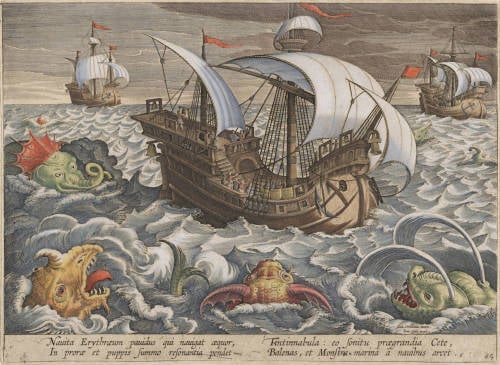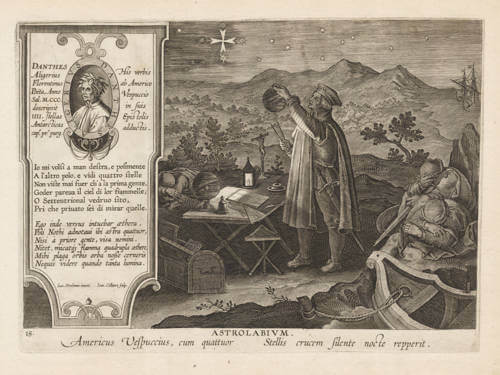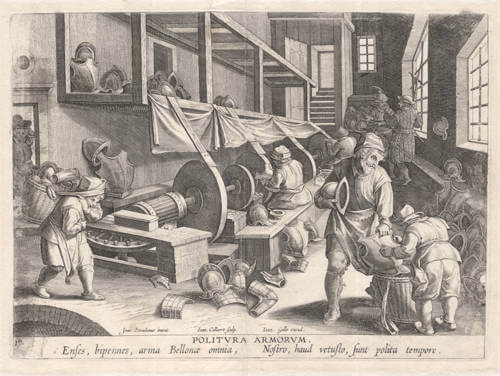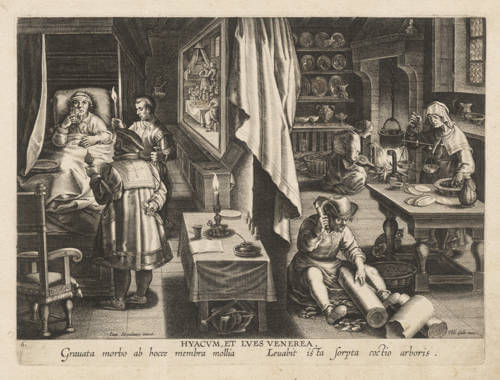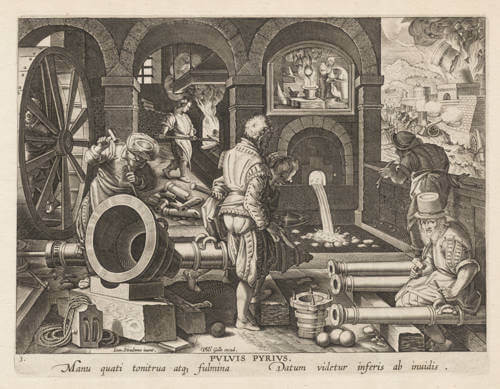Leen Helmink Antique Maps
Old Master Print of the exploration and navigation of the Indian Ocean, by Johannes Stradanus
The item below has been sold, but if you enter your email address we will notify you in case we have another example that is not yet listed or as soon as we receive another example.
Stock number: 19010
Zoom ImageCartographer(s)
Johannes Stradanus (biography)
Title
[ Untitled ] Navita Erythraeum pavidus qui navigat aequor ...
First Published
Antwerp, 1578
This Edition
1817
Size
19.5 x 27 cms
Technique
Condition
excellent
Price
This Item is Sold
Description
Legendary and iconic engraving by Philip Galle after a drawing by Jan van der Straet (ca. 1575), showing the animals and the dangers of the Indian Ocean.
The print is one of the most famous and dramatic maritime prints from the early age of exploration.
Of exceptionl rarity. The final print and climax from Stradanus' seminal print series of animals Venationes Ferarum, Avium, Piscium. (The Hunting of Wild, Birds, and Fishes), first published in 1578.
Condition
Here in the final edition of 1817, published in London and printed from the original copper plates. So this edition was published 200 years ago, not 400 years ago. In attractive original colour, which is typical for this final edition. Margins short, but the imprint and platemark complete.
Ship types
The ships are typical Portuguese carracks, the work horses of the 16th century. They explored and opened up the world's oceans for trade. As the old proverb goes: If the world had been ten times the size, the Portuguese would also have discovered it. Vasco da Gama used carracks on his epic first voyage to Asia in 1497-99, and Columbus and Magellan used very similar vessels on their voyages of exploration.
Transcription and translation
We have not been able to find in the literature or online a translation of the accompanying text at the bottom of the print, so we give ours:
Navita Erythraeum pavidus qui navigat aequor,
In prorae et puppis summo resonantia pendet
Tintinnabula : eo sonitu praegrandia Cete,
Balenas, et monstra marina a navibus arcet.
The fearful sailor who navigates the Indian Ocean,
Above the prow and stern hangs ringing Bells :
the sound for warding off attacks on ships by
huge whales and the monsters of the sea.
Interestingly, and as can be seen from the ship's depiction, this means these ships were equipped with dozens of large bells all around, with the purpose of scaring away the big whales and the monsters of the sea.
Erfindungen und Entdeckungen des Mittelalters und der Renaissance in Kupferstichen des ausgehenden 16. Jahrhunderts.
The illustrator of the sheet is Bruges-born Jan van der Straet (1523-1605), who in Latin was called Stradanus and in Italian Stradano (or della Strada). Stradanus, painter and draftsman, worked mainly in Florence, where he belonged to the circle of the artist and art writer Giorgio Vasari. Like Vasari, Stradanus moved in the path of late Renaissance mannerism. Characteristic of the mannerism of Stradanus is the abundance of juxtaposed details, the extensive joy, the fragmentation of the space, the narrowness and compression of the images, the use of the picture in picture and the contortion of the figures.
From his Flemish motherland Stradanus brought with him the strong inclination for the powerful and the realistic depiction. Vasari praised Stradanus’ great drawing skills, his excellent ideas and his ingenuity. In the extensive work of Stradanus comes out a variety of pasteboards, which he delivered to the wall carpet manufacturer for the Medici family in Florence. Especially his hunting scenes made Stradanus famous. We encounter his paintings and frescoes mainly in Florence, such as in Palazzo Vecchio.
(Klemm)
Johannes Stradanus (1523-1605)
Johannes Stradanus, or Giovanni Stradano, or Jan van der Straet or van der Straat, or Stradanus or Stratensis (Bruges 1523 – Florence 2 November 1605) was a Flanders-born mannerist artist active mainly in 16th century Florence, Italy. Born in Bruges, he began his training in the shop of his father, then in Antwerp with Pieter Aertsen.
By 1545, he had joined the Antwerp guild of Saint Luke or painters' guild, the equivalent of the Roman (Accademia San Luca). He reached Florence in 1550, where he entered in the service of the Medici Dukes and Giorgio Vasari. The Medici court was his main patron, and he designed a number of scenes for tapestries and frescoes to decorate the Palazzo Vecchio in Florence, the Medici Villa at Poggio a Caiano, and providing illustrations for the Arazzeria Medicea. He also worked for the Pazzi Family in their estates in Montemurlo.
Many of his drawings became so popular they were translated into prints. Stradanus collaborated with printmakers Hieronymus Cock and the Galle family in Antwerp to produce hundreds of prints on a variety of subjects. He also worked with Francesco Salviati in the decoration of the Vatican Belvedere. He was one of the artists involved in the Studiolo of Francesco I (1567-1577), to which he contributed two paintings including "The Alchemist's Studio".
Karel van Mander wrote about Stradanus in his Schilder-boeck (book of famous painters), mentioning that he was 74 in 1603 and still a member of the Florence drawing academy. He also mentioned his pupil Antonio Tempesta, who painted ships and Amazon battle scenes (bataljes), mainly in 16th century Florence, Italy.
Johannes Stradanus is one of the most well-known unknown artists in history. Even though the Bruges-born painter (1523-1605) had a more than successful career in the highly competitive city of Florence in the second half of the 16th century, his name long remained a well-hidden secret for specialists only. Many of his works, though, are very well known.
Around 1570, Stradanus – who began as designer of tapestries and fresco painter in service of the Medici – started a second career as draughtsman and designer of hundreds of prints. These were engraved, published and distributed all over the then-known world by Antwerp publishers in huge numbers. It are these works – widely collected, copied and used – which secured Stradanus’s place in art history as an inventive and influential artist.
Johannes Stradanus died in Florence in 1605.
Literature
New Hollstein (Dutch and Flemish) 342-345 (Johannes Stradanus).
Stevens & Tooley: Map Collector 2, p.22-24, "One of the Rarest Picture Atlases".
van Mander: Schilder-boeck, 1604.
Sellink: Stradanus (1523-1605), Court Artist of the Medici, 2008.
Markey: Renaissance Invention - Stradanus's Nova Reperta, 2020.
Related Categories
Old Master Prints
Antique maps of Australia
Antique maps of Japan
Antique maps of China
Antique maps of the Philippines
Antique maps of Southeast Asia
Antique maps of India and Ceylon
Antique maps of Korea
Antique maps of the Middle East
Antique maps of Asia
Antique maps of Africa
Old books, maps and prints by Johannes Stradanus
